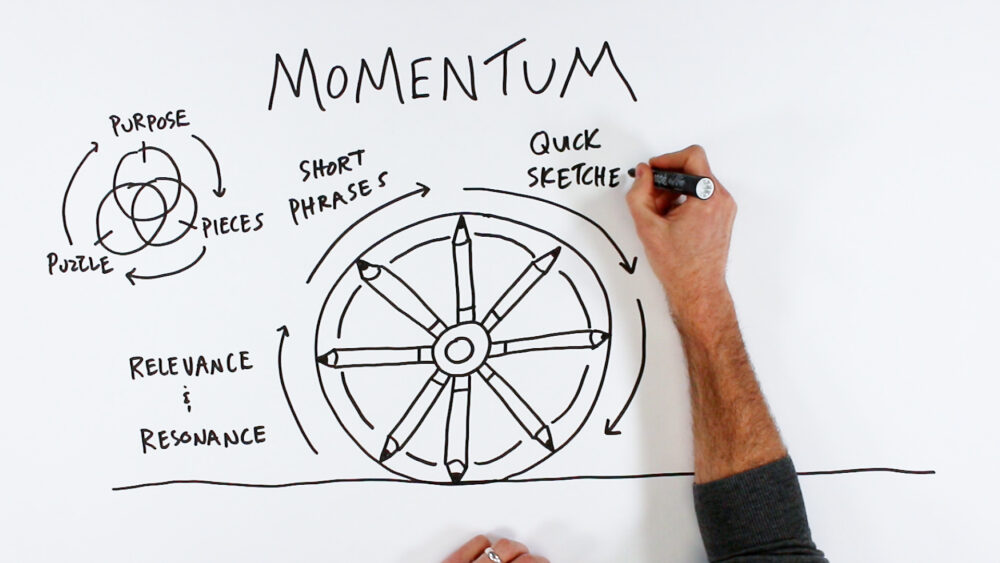Have you ever found yourself stuck in the middle of a creative project? You’re deep in the details, trying to make sense of all the individual components while desperately trying not to lose sight of the big picture. This is a common challenge, especially in visual thinking projects where we’re working to transform complex information into clear, actionable visualizations.
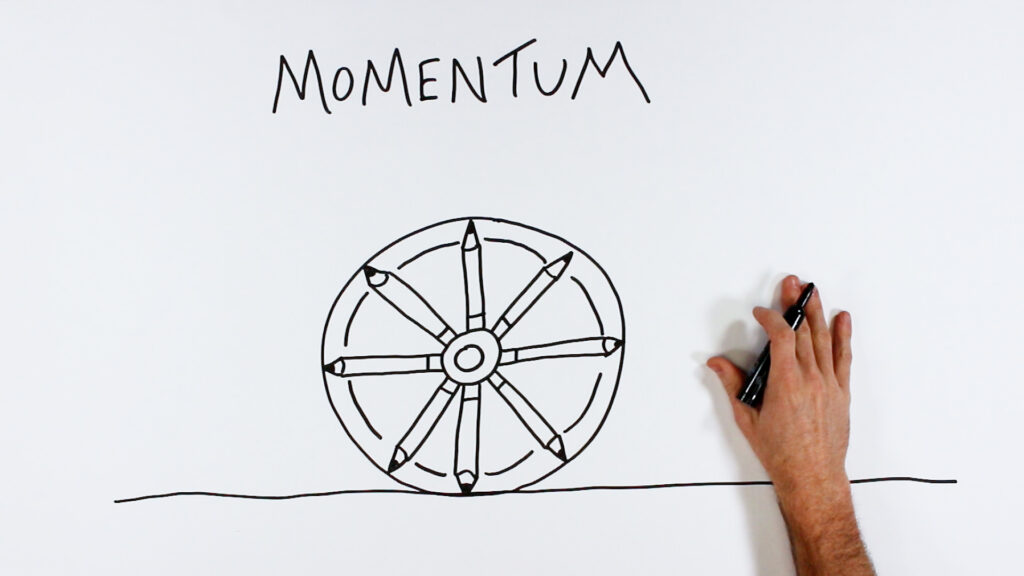
What is Visual Thinking?
Visual thinking involves taking interesting ideas and sketching out drawings or diagrams that help us understand and act on them. These projects might involve:
- Visualizing concepts from books you’re reading
- Processing challenging work situations
- Preparing presentations for colleagues or students
- Converting complex ideas into shareable visual formats
The Sketch-Out Framework
In previous posts I’ve shared the Sketch It Out framework which involves three main stages:
- Defining your purpose
- Collecting the pieces
- Solving the puzzle
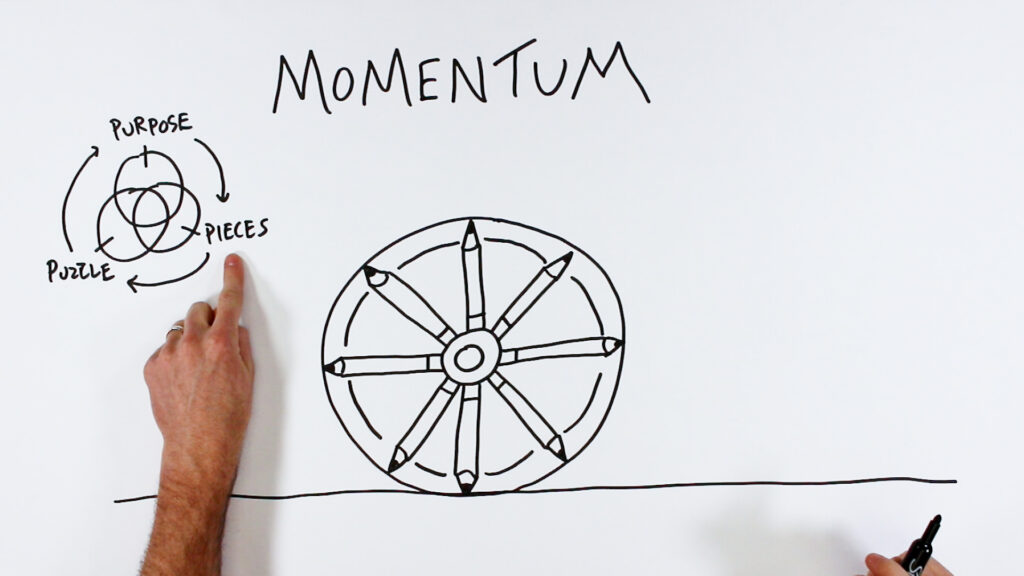
The stage where most people lose momentum is during the “collecting the pieces” phase. This is where it’s easiest to get lost in the weeds and forget your ultimate goal. To help you maintain momentum, I want to share four specific tips that will keep your project moving forward.
Four Tips for Maintaining Momentum
1. Focus on Relevance and Resonance
When gathering information, pay attention to two key factors:
Relevance: Keep your purpose in mind and capture anything that directly relates to your goals. For example, when reading a book, your purpose helps you identify which sections to underline.
Resonance: Notice your emotional reactions to certain ideas or stories. Even if they don’t seem immediately relevant to your purpose, strong emotional resonance often indicates something worth exploring.
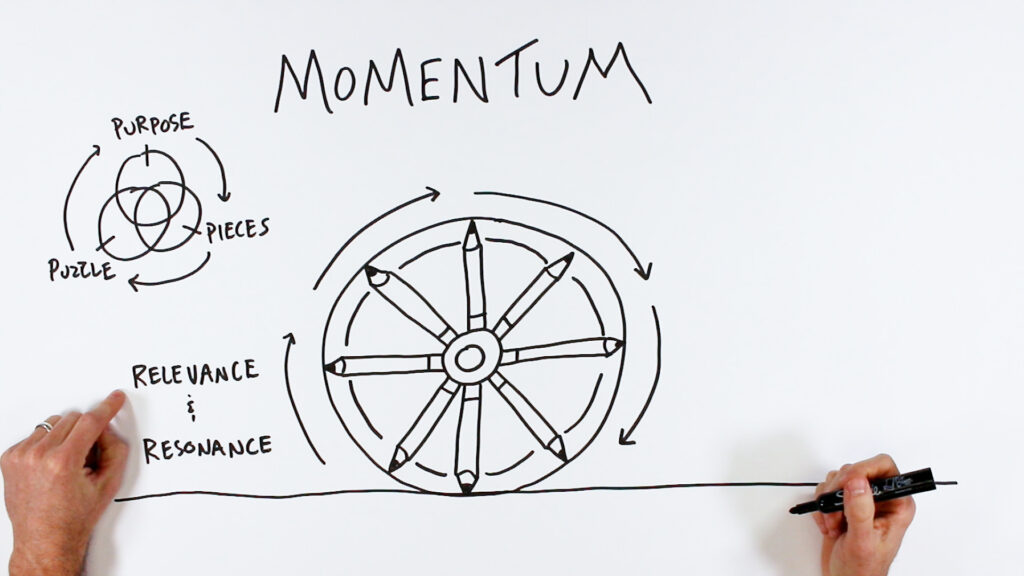
2. Use Short Phrases Instead of Full Excerpts
Don’t get caught in the trap of transcribing everything word-for-word. Instead, capture key terms and brief summary phrases.
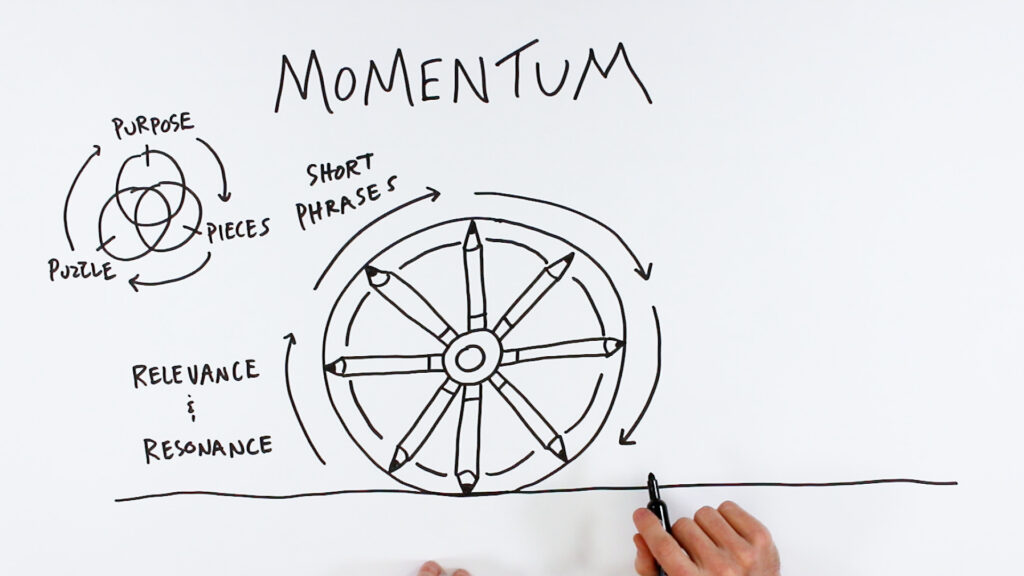
Remember: Transcription isn’t an effective note-taking technique – synthesis and summarization are.
3. Embrace Quick Sketches Over Full Illustrations
Visual thinking isn’t about creating artwork – it’s about capturing ideas visually to help you process them. So use simple stick figures, draw quick scenes and icons, and don’t obsess over aesthetic perfection.
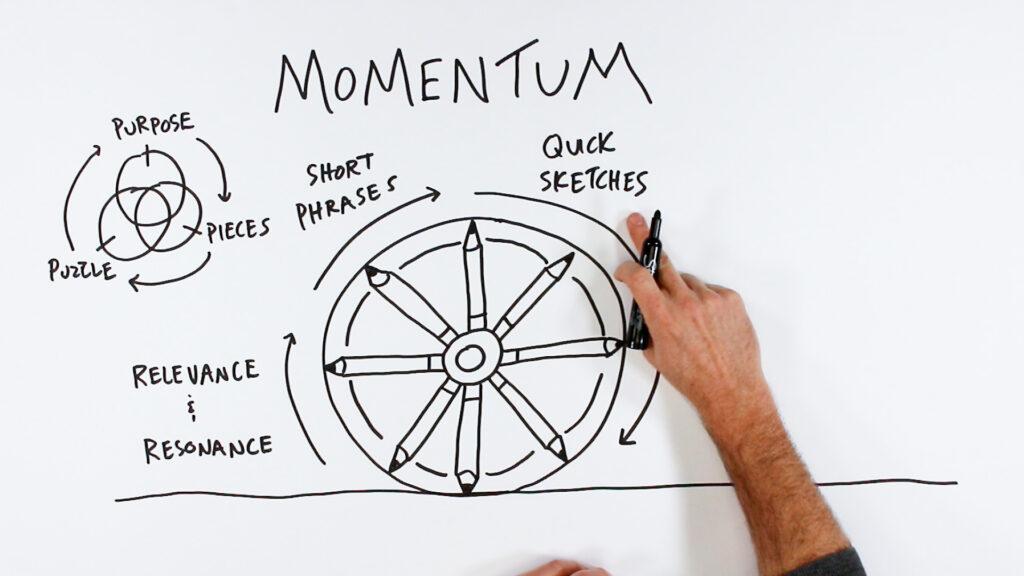
4. Don’t Be Precious About Your Work
During the collection phase:
- Don’t worry about perfect spelling
- Accept imperfect drawings
- Keep moving forward
- Focus on getting ideas down rather than perfecting them
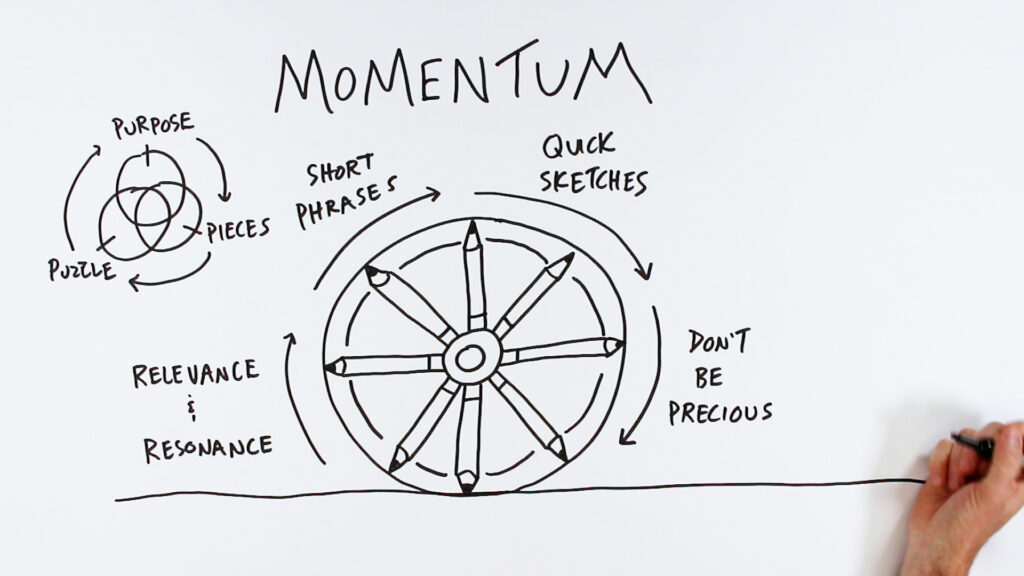
A Real-World Example
Let me share my current process with two books I’m reading as part of the 2025 Sketch Instinct Book Club. For each chapter, I:
- Read and underline key passages
- Create a rough chapter summary
- Include quick sketches of important concepts
- Note interesting stories and metaphors
- Don’t worry about perfection in the initial sketches
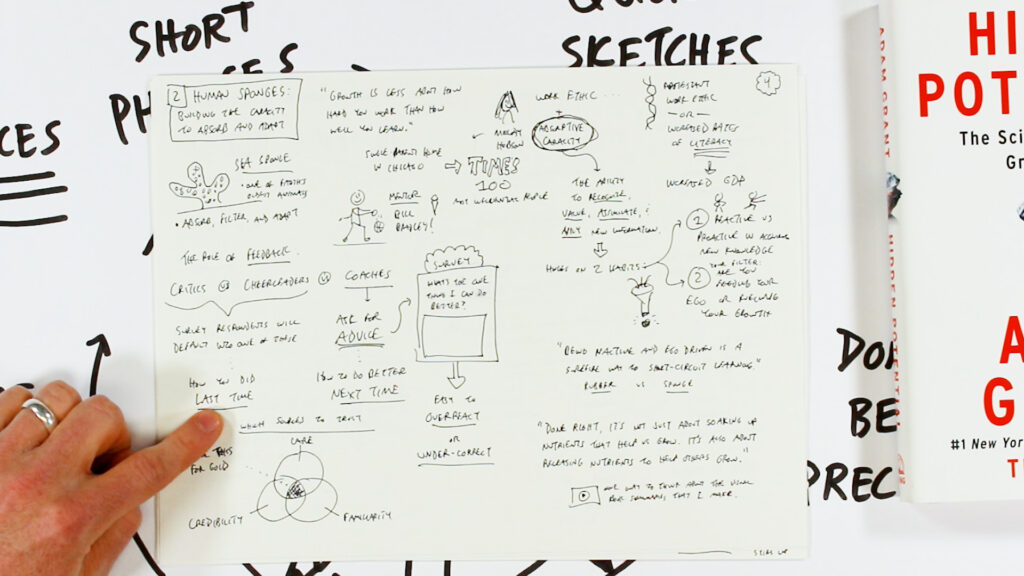
For instance, I might roughly sketch a sea sponge metaphor or draw a person even if I don’t know what they actually look like. These rough sketches serve as placeholders that I can refine later if they make it into the final visual summary.
Final Thoughts
The key to maintaining momentum in visual thinking projects is to avoid getting bogged down by perfectionism during the initial stages. Use relevance and resonance as your filters, capture ideas concisely, make quick sketches, and keep moving forward. Remember, you can always refine your work later – but first, you need to get all the pieces down.
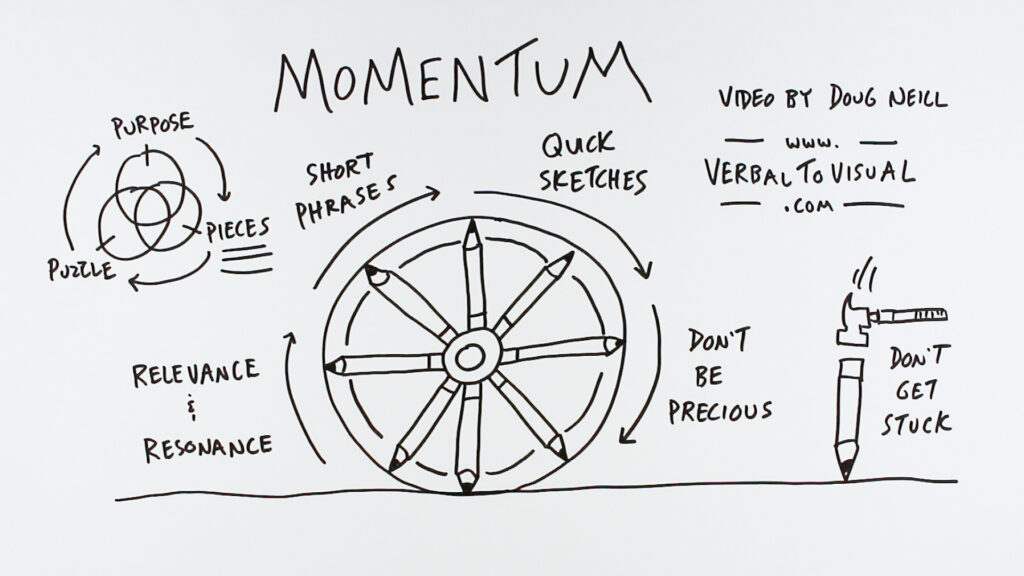
Don’t let perfectionism stop you from completing your project and sharing your valuable insights, whether they’re for others or for your future self.
Want to develop your visual thinking skills further? Check out our Sketch Instinct program, where we read and visualize books together as a community, plus build skills through complete-at-your-own-pace courses.
